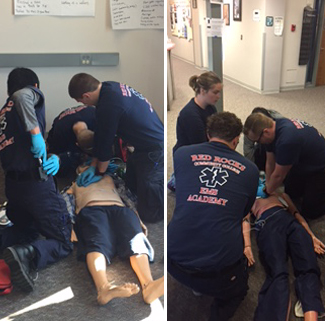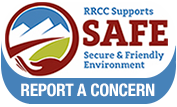Functional Position Description Emergency Medical Technician
Introduction
We are providing the following general position description of the Emergency Medical Technician Basic (EMT-B), Intermediate (EMT-I), and Paramedic (EMT-P). This should guide you when giving advice to anyone who is interested in understanding what qualifications are expected of the Emergency Medical Technician at each level.
Qualifications
Successfully complete an EMS Division approved course. Achievement of a passing score on written and practical certification examinations is required.
Must be at least 18 years of age. Generally, the knowledge and skills required show the need for a high school education or equivalent. Ability to communicate verbally via telephone and radio equipment; ability to lift, care and balance up to 125 pounds (250 with assistance); ability to interpret written, oral and diagnostic form instructions; ability to use good judgment and remain calm in high stress situations; ability to work effectively in an environment with loud noises and flashing lights; ability to function efficiently throughout an entire work shift; ability to calculate weight and volumes ratios and read small print, both under threatening time constraints; ability to read and understand the English language manuals and road maps; accurately discern street signs and address numbers; ability to interview patient, family members, and bystanders; ability to document, in writing, all relevant information in prescribed format in light of legal ramifications of such; ability to converse in English with co-workers and hospital staff as to status of patient. Good manual dexterity, with ability to perform all tasks related to highest quality patient care. Ability to bend, stoop, and crawl on uneven terrain; and the ability to withstand varied environmental conditions such as extreme heat, cold, and moisture. Ability to work in low light, confined spaces and other dangerous environments.
Competency Areas
EMT-Basic- Must demonstrate competency handling emergencies utilizing all Basic Life Support equipment and skills in accordance with all behavioral objectives in the DOT/EMT Basic curriculum. Intravenous access is an optional skill and curriculum.
EMT-Intermediate - Must demonstrate competency handling emergencies utilizing all basic and Advanced Life Support equipment and skills in accordance with all behavioral objectives in the Colorado EMT-Intermediate curriculum.
EMT-Paramedic - Must demonstrate handling emergencies utilizing all Basic and Advanced Life Support equipment and skills in accordance with all behavioral objectives in the DOT/EMT-Paramedic curriculum. The EMT-P has reached the highest level of certification.
Description of Tasks
Receives call from dispatcher, responds verbally to emergency calls, reads maps, may drive ambulance to emergency site, uses most expeditious route, and observes traffic ordinances and regulations.
Determines nature and extent of illness or injury, takes pulse, blood pressure, visually observes changes in skin color, auscultated breath sounds, makes determination regarding patient status, establishes priority for emergency care, renders appropriate emergency care (based on competency level; may administer intravenous drugs or fluid replacement as directed by physician. May use equipment (based on competency level) such as but not limited to, defibrillator, electrocardiograph, performs endotracheal intubation to open airways and ventilate patient, inflated pneumatic anti-shock garment to improve patient’s blood circulation.
Assists in lifting, carrying, and transporting patient to ambulance and onto a medical facility. Reassures patients and bystanders, avoids mishandling patient and undue haste, searches for medical identification emblem to aid in care. Extricates patient from entrapment, assesses extent of injury, uses prescribed techniques and appliances, radios dispatcher for additional assistance or services, provides light rescue services if required, provides additional emergency care following established protocols.
Complies with regulations in handling deceased, notifies authorities, arranges for protection of property and evidence at scene. Determines appropriate facility to which patient will be transported, report nature and extent of injuries or illness to the facility, asks for direction from hospital physician or emergency department or according to published protocols. Identifies diagnostic signs that require communication with facility. Assist in removing patient form ambulance and into emergency facility, reports verbally and in writing observations about and care of patient at the scene and en-route to facility, provides assistance to emergency staff as required.
Replaces supplies, sends used supplies for sterilization, checks all equipment for future readiness, and maintained ambulance in operable condition, ensures ambulance cleanliness and orderliness of equipment and supplies, decontaminates vehicle interior, determines vehicle readiness by checking oil, gas, water in battery and radiator, and tire pressure, maintains familiarity with all specialized equipment.









